See Also
- My Favorite Places to Stay in Florence
- My Favorite Hotels in Florence
- My Favorite Hotels for Families in Florence
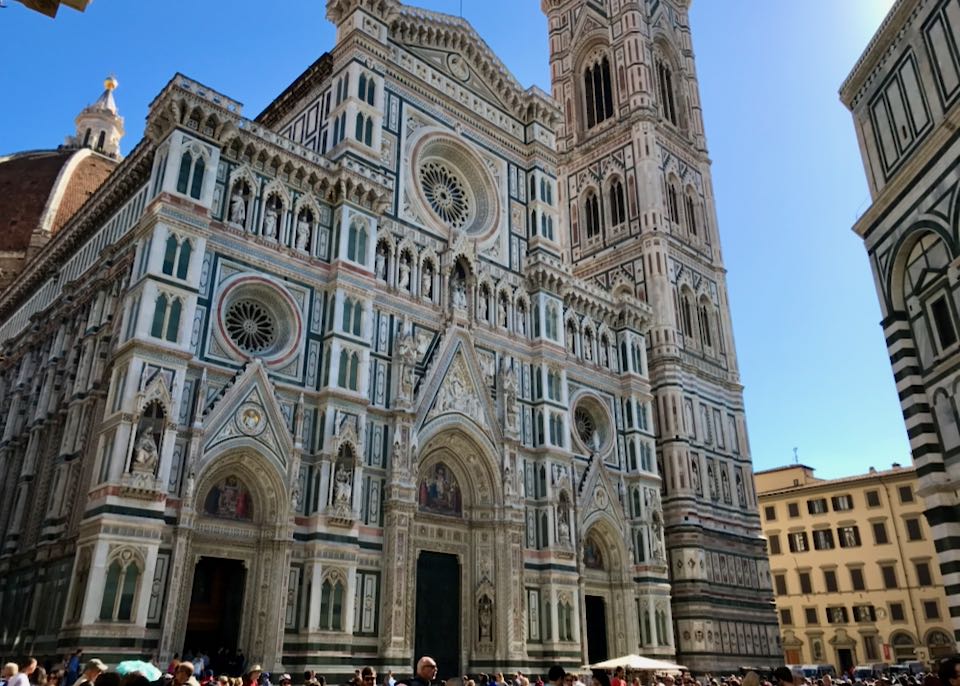
The Duomo is the cultural and historical highlight of Florence. Climbing the steps to the top is one of my favorite things to do while visiting.
The Best Tours in Florence
Note: Book early! These tours get fully booked months in advance.
- VIP David & Duomo – Skip the line entrance and VIP access to exclusive areas of Florence’s iconic cathedral. Includes a guided tour of the cathedral complex, terraces, and baptistry doors. Start near the statue of David and finish with an (optional) climb to the top of the dome and spectacular views over the Renaissance city.
- Tuscany Wine Tour – Tour multiple wineries, the Tuscan countryside, and the idyllic town of San Gimignano.
- Full-Day Small Group Wine & Food Tour – Excellent tour of three wineries in the Tuscan wine region. Includes lunch at a hilltop wine estate.
- Full–Day Countryside Tour with Lunch – Lunch, wine, and sightseeing in Siena, San Gimignano, and the Tuscan countryside.
- Curious Appetite Food Tour – Italian-American food writer Coral Sisk and her knowledgeable team run private and small-group tours around the city focused on gourmet experiences from markets to aperitivi and gelato to progressive Tuscan food. You can also sign up for cooking classes, from pasta and gelato-making to craft cocktails.
- Fiesole Bike Tour – Venture out of the city with tours run by passionate local Giovanni Crescioli. His most popular offering is a sunset tour from Fiesole to Florence, with extra virgin olive oil tasting included on the way. Suitable for families.
- Florence Boat Tour – See the city from a whole new angle, cruising down the river in a barchetto (a traditional Florentine gondola) at sunset, with a chilled glass of wine.
- Tuscany Vespa Tour – Exhilarating scooter tour through the picturesque hills and vineyards of Chianti. Includes a visit of a 12th-century castle for a wine and olive oil tasting in the morning and lunch at a family-run hilltop restaurant midday.
- Day Trip from to Chianti, Siena, and San Gimignano – Full-day tour of Tuscan highlights, including Siena (Florence’s historic rival city), San Gimignano (with its 14 well-preserved medieval towers), and Chianti (romantic wine country – tastings included).
- Made in Florence Artisan Tour – 3-hour tour through the traditional workshops in the Santo Spirito neighborhood. The tour is different every time but can include jewelers, mosaic, etching, cobblers, and much more.
- Florence in a Day – Full-day tour of Florence’s must-see sites, including the Florence Cathedral (Duomo), David, and the Uffizi Gallery, while strolling the gorgeous piazzas and learning the rich history of the city.
- Skip the Line Tickets are recommended anytime but especially during high season (mid-May through July and September). The major museums offer online reservations for particular time slots on B-Ticket, including the Uffizi, Galleria dell’Accademia, the Bargello, Cappelle Medicee, Pitti Palace, the Boboli Gardens, and more. The Florence Cathedral (Duomo) does not offer skip the line tickets; the cathedral itself is free to enter with no reservations. Other monuments in the Duomo complex (climbing Brunelleschi’s Dome, San Giovanni’s Baptistery, Giotto’s Bell Tower, Duomo Terraces, and the Museum) allow reservations and require tickets, bookable through their official site.
The Best Things to Do in Florence
1. The Duomo
Florence’s cathedral, Cattedrale di Santa Maria del Fiore AKA the Duomo, is the most recognizable landmark of the Renaissance city. Construction began in 1296 and completed in 1436, though the façade was added in the late 19th-century. The cathedral features an intricate red, white, and green façade and is topped by Brunelleschi’s groundbreaking dome, the largest brick dome in the world. Climb to the top of the dome to see the double-shell construction and get a closer look at the frescoed interior and a sweeping view over the city. The Duomo complex includes the Baptistery, known for its golden east doors designed by Ghiberti and dubbed the “Gates of Paradise” by Michelangelo and the free-standing Bell Tower, designed by Giotto, one of the founders or Renaissance architecture. Then stop at the fantastic Museo dell’ Opera del Duomo (the Duomo Museum) to see Ghiberti’s original Doors of Paradise, Donatello’s haggard Mary Magdalene, and learn about how the Duomo was built. Every portion of the cathedral complex runs on different hours. The cathedral and museum are open Monday through Saturday from 10:15 a.m. to 4:15 p.m. The Baptistery is open daily from 11:15 a.m. to 5:15 p.m. The Bell Tower is open daily from 8:15 a.m. to 7:45 p.m. The Terraces are open Monday through Friday from 8:30 a.m. to 8:00 p.m. and Saturday from 8:30 a.m. to 5:30 p.m. Prior to Covid-19, a single, affordable ticket covered the entire cathedral complex. Currently, tickets to each section must be purchased separately. Standard admission to each section is as follows: Cathedral: free; Brunelleschi’s Dome: €20; Giotto’s Bell Tower: €15; Duomo Terraces: €25; and the Museum + Baptistery: €10. The skip-the-line Duomo tour is recommended.2. Galleria degli Uffizi
The top treasure-house of Italian Renaissance art in the world. The dizzying collection, arranged in a palazzo by the river, runs from the ancient Greeks to the 18th-century. The Renaissance highlights include Giotto, Leonardo, and Michelangelo, and a whole room of Botticelli, including his Birth of Venus”. Absolutely unmissable. The Uffizi is open Tuesdays through Sundays from 9:00 a.m to 6:30 p.m. Closed Mondays. Standard adult tickets are €20.3. Galleria dell’Accademia
Always busy art museum, home to Michelangelo’s most famous work, housed in a room by itself. David is not the only Michelangelo here; the Accademia also houses his St. Matthew sculpture and his never-completed Slaves. There are also works by other Florentine Renaissance greats, especially from the years 1300 to 1600, including Ghirlandaio, Botticelli, and Uccello. The museum is open Tuesdays through Sundays from 9:00 a.m. to 6:00 p.m. Closed on Mondays. Standard adult entry is €8.4. Museo Nazionalle del Bargello
Hosting the largest collection of Italian Gothic and Renaissance sculpture, the Bargello is known for its collection of masterpieces by Donatello, Michelangelo, Verrochio, and many more. The main attraction here is Donatello’s David, a bronze statue that was the first nude since antiquity and the inspiration for Michelangelo’s more famous version. The Bargello is open daily from 8:45 a.m. to 1:30 p.m. Standard adult admission is €8.5. Wine Country
The Tuscan countryside offers a romantic escape from the throngs of tourists filling Florence’s busy streets. With a smattering of quaint, medieval villages and rolling hills blanketed in vineyards, a visit to the wine country creates an excellent contrast to the city’s art-filled churches and museums. The Chianti, Chianti Classico, and Vernaccia regions are easy to reach on your own by car or bus, though to learn the ins and outs of Tuscan wines, it’s best to book a guided tour, most of which include wine and olive oil tastings at 2 to 3 vineyards. See our article on the Best Wine Tours in Florence for more detailed information.6. Basilica di Santa Croce
The largest Franciscan cathedral in the world, the Basilica di Santa Croce features 16 chapels (many decorated with frescoes by Giotto) and artworks by Cimabue, Donatello, Canova, and Maso di Banco, but it is best known for its glittering array of Renaissance figures who rest here, from Michelangelo to Galileo and Machiavelli. Construction on the cathedral, replacing an older church on the same site founded by St. Francis of Assisi, began in the late 13th century by Arnolfo di Cambio (though this is disputed) and was completed in the late 14th century. Its striking façade topped with a blue Star of David was added in the mid-19th century by the Jewish Italian architect Nicolò Matas, who had requested to be buried inside with his peers but was instead buried under the church’s threshold due to religious discrimination. Standard tickets cost €8. Santa Croce is open Mondays, Thursdays, Fridays, and Saturdays from 11:00 to 5:00 p.m. and on Sundays and holidays from 1:00 p.m. to 5:00 p.m.7. San Miniato al Monte
Thousand-year-old basilica and monastery with stunning Romanesque architecture filled with gorgeous mosaics, a zodiac-patterned marble inlay floor, and a sweeping view of the city from its hilltop perch. From here you can see the Florence skyline as well as the ancient Roman wall dating back to the 2nd century. San Miniato’s stately cemetery is the final resting place of many notable Florentines, including Collodi, author of Pinnochio. The church is free to enter and open nightly until 7:00 p.m. Visit an hour before sunset, then walk 5-minutes downhill to enjoy the view from Piazzale Michelangelo.8. Mercato Centrale
AKA the San Lorenzo Market, this two-story complex is a foodie heaven. The ground floor stalls are dedicated to all the makings of great Tuscan foods, including fresh produce, spices, cheeses, meats, while the upper floor boasts an epicurean food court of regional Italian fare, like Neapolitan pizza, Chianti wine, Florentine gelato, and much more. Surrounding the building is a swathe of stalls selling leather goods, ceramics, clothing, and gifts. Excellent stop for a meal, picnic provisions, or souvenir shopping. The official hours are daily from 8:00 a.m. to midnight, though the outdoor marked closes earlier in the evening, and the ground floor vendors typically wrap up around 2:00 p.m.9. Piazzale Michelangelo
Florence’s best-known viewpoint offers stunning views of Florence’s skyline, including the Duomo, Palazzo Vecchio, Tempio Maggiore, and Santa Croce Church. Downhill from San Miniato, the view is not as expansive but vantage point is closer to the city offering clearer, panoramic views of its monuments. Dedicated to Michelangelo, the square features a bronze replica of David in its center. Popular for sunsets, this little square can get crowded, especially with bus tours. From here it is a short, pleasant walk downhill to the San Niccolò neighborhood for dinner and drinks. Open 24 hours a day.10. Basilica di San Lorenzo
Consecrated in 393 A.D., the Basilica di San Lorenzo is among the largest and perhaps the oldest church in Florence (though a handful of other churches also make that claim). In the 1400s, this was the church of the Medicis and as such is filled with the works of Donatello, a friend of the family and beneficiary of their patronage. The artist is also buried here in the crypt near Cosimo Medici, who is buried inside an enormous column. Rebuilt in the Romanesque style in the 11th-century, then rebuilt again in the 15th-century, this landmark church features art and design by many of Florence’s greats, among them Brunelleschi and Michelangelo. The Medici Chapels are adjacent to the basilica and part of the same building complex, though the tickets and entrance are separate from the main church. Standard tickets to the basilica are €6 or €8.50 for the complex (basilica, cloister, museum, and Laurenziana Library).11. Cappelle Medicee
The Medici Chapels adjoin San Lorenzo Basilica, though they were built much later. The New Sacristy was designed by Michelangelo and built in the 16th century, while the Chapel of the Princes (the larger, domed building) was designed by Matteo Nigetti in the 17th century. In the New Sacristy, you’ll find two immense tombs and several sculptures of Michelangelo (among them Night, considered his finest work). The Chapel of the Princes houses six tombs and elaborate Baroque design with immense marble walls inlaid with contrasting-colored marble and semi-precious stones. The chapel is topped with a richly frescoed cupola. Beneath the chapels is a crypt where dozens of lesser-known members of the Medici family are interred. Open daily from 8:15 a.m. to 1:50 p.m. Closed on the second and fourth Sundays and first, third, and fifth Mondays of each month. Standard tickets are €16.75.12. Palazzo Vecchio
Imposing 14th-century fortress built for the city government. It now includes the Quartiere di Leo X (the apartments of the Medici pope), Donatello’s Judith and Holofernes, and the Salone dei Cinquecento created for the ruling council of 500 and painted by Vasari. There is a fantastic panorama if you climb the spiky Torre d’Arnolfo. Open Friday, Saturday, Sunday, and Monday from 3:00 p.m. to 8:00 p.m. (last entry at 7:00 p.m.) Standard tickets are €12.50.13. Palazzo Pitti and Giardino di Boboli
Only in Florence would a banker build a palace fit for a king. Explore the Medici’s royal apartments and their treasury and art collection, including more Raphaels than anywhere in the world. Then wander through the relaxing green Giardino di Boboli to find the dreamlike Grotta del Buontalenti, a museum of porcelain, and panoramic views. Pitti Palace is open Tuesday through Sunday (closed Monday) from 8:30 a.m. to 6:30 p.m., while the Boboli Gardens are open Monday through Sundays (closed first and last Mondays) from 8:45 a.m. to 4:30 p.m. (November, December, January, and February), 5:30 p.m. (early March and late October), 6:15 p.m. (late March, April, May, September, early October) or 6:30 p.m. (June, July, and August). Tickets are sold separately. Standard tickets for Palazzo Pitti are €16 and for the Boboli Gardens are €10.14. Tempio Maggiore
AKA the Great Synagogue of Florence, Tempio Maggiore is one of the largest and most important synagogues in Southern Europe. The Jewish community living in the Grand Duchy of Tuscany were emancipated in 1848, and after the Kingdom of Italy was established in 1861, all Italian Jews were declared free citizens. Construction on the Tempio Maggiore began in 1874, blending Italian Romanesque and Moorish Revival architecture with Sephardic art and design. Since its construction, the Tempio Maggiore has served as a template for many later synagogues worldwide. The synagogue complex also houses a two-story museum with the ground floor dedicated to Florentine Jewish history – their public lives and relationship with the city – while the upper floor focuses on the origins of Florence’s Jewish community, especially domestic life and private devotion. The Great Synagogue and Jewish Museum are open from Sunday through Thursday year-round – from 9:30 a.m. to 6:30 p.m. in the summer and from 10:00 a.m. to 5:30 p.m. in the winter. Fridays and holidays from 9:30 a.m. to 5:00 p.m. (summer) and from 10:00 a.m. to 3:00 p.m. (winter). Closed on Saturdays.15. Truffle Hunting
A prized ingredient in Tuscan cooking since the Renaissance, four varieties of native white and black truffles grow in the countryside surrounding Florence with each coming into season at a different time of the year. Spend a crowd-free day hiking the forest trails led by experienced truffle hunter Giulio Benuzzi and his faithful dogs Maga and Edda to learn the secrets of foraging, methods of harvesting, and local gastronomic traditions. Truffle walks come complete with a light truffle picnic and local red wine.16. Day Trips to Tuscan Villages
Florence enjoys a privileged location in the heart of Tuscany and is well-connected by bus and train to a handful of picturesque cities and villages. Of course, Pisa is the best known for its Leaning Tower (Pisa Cathedral’s bell tower, seen above behind the cathedral), though Fiesole is the closest and easiest to access village from Florence, with ancient Etruscan and Roman ruins. Siena, the traditional rival of Florence, boasts a stunning duomo (cathedral), immense Santa Maria della Scala museum complex, and the Piazza del Campo, widely regarded as the prettiest square in Europe. San Gimignano is a small village famous for its 14 medieval towers. Arezzo is not on most travelers’ radars, making it a quiet escape for exploring its monumental Medici Fortress (Fortezza Medicea), medieval and Renaissance churches, and Roman amphitheater. Lucca is another Tuscan gem; it’s well-preserved medieval walls have been turned into a pedestrian pathway encircling the ancient city, which is filled with medieval towers, cathedrals, and a botanical garden. Each of these historic villages and cities can be reached easily and affordably from Florence by bus or train within 45 minutes to 1 hour 45 minutes.17. Ponte Vecchio
An icon of the city, the only bridge to survive the German occupation. A pretty cluster of jewelry shops still occupies it, and above them rise the arches of the Corridoio Vasariano. This private passage built for the Medici is due to reopen in 2021.18. Gelato
Florence is the birthplace of gelato, a frozen dessert similar to ice cream, made with a creamy base, slow-churned with chocolate, fruits, or nuts, and served in a cone or cup. Gelaterias (gelato shops) seem to sit on every corner in Florence, though not all offer the real deal. Look for gelaterias serving fresh gelato made daily (sometimes the word artiginale will be on a sign in the window) in subdued, naturally occurring colors served from recessed tins (bonus points if the gelato is covered by a metal lid). Avoid shops selling gelato in giant, brightly colored mounds. Some of the best gelaterias in Florence are Perche No!, Gelateria della Passera, and Il Procopio.19. Basilica di Santo Spirito
An Augustinian church and monastery, the origins of Santo Spirito date to the mid-1200s, though the current basilica was constructed in the mid-1400s. Designed by Brunelleschi, the church was built with a Latin cross floor plan, featuring a simple, symmetrical façade and a stunning, albeit understated Renaissance interior. Most of the interior’s artworks are buy lesser-known Florentine artists, with the notable exception of Michelangelo’s crucifix. Michelangelo moved into the monastery at 17, where he was able to study the anatomy of corpses at the monastery’s hospital. At 18 he carved the basilica’s wooden crucifix based on his studies; this is one of the earliest surviving works of Michelangelo. Located in the Oltrarno neighborhood on the Piazza di Santo Spirito. The basilica is free to enter daily, while the church complex (including the sacristy where Michelangelo’s crucifix is displayed) costs €2 to enter from Monday through Saturday 10:00 a.m. to 1:00 p.m. and 3:00 p.m. to 5:00 p.m. (closed on Wednesdays) and on Sundays and holidays from 11:30 a.m. to 1:30 p.m. and 3:00 p.m. to 5:00 p.m.20. Museo degli Innocenti
The Museum of the Innocents is the most heart-wrenching attraction of Florence. Housed in the Intsituto degli Innocenti, a facility focused on advancing the welfare of children for six centuries, the museum traces its history as Florence’s oldest orphanage and children’s hospital. The basement level at the main entrance covers the institute’s work from the early 15th century, when a wheel sat outside where infants could be abandoned with no questions asked through the late 19th century when anonymous drop-offs were halted, through the modern day. Artifacts here include the broken ID charms the parents often placed with their children on the wheel, along with artworks, biographies of individual children, and multimedia presentations. The ground floor is dedicated to the building’s architecture, designed as a hospital by Brunelleschi, while the upper floor is devoted to the institute’s art collection, including works by Botticelli, Domenico Ghirlandaio, Luca della Robbio, and many more. On the rooftop is the marvelous Verone Caffè, offering views of the Duomo and Synagogue paired with wine, cocktails, coffee, and light bites. The museum is open Thursdays through Mondays from 4:00 p.m. to 8:00 p.m. during summer and from 3:00 p.m. to 7:00 p.m during winter. Closed Tuesdays and Wednesdays.21. Museo di San Marco
Built in the mid-fifteenth century on top of a medieval, Sylvestrian monastery, the Dominican friary complex of San Marco was constructed by the architect Michelozzo, the favorite of Cosimo de’ Medici who funded the project and had his own cell here for prayer and retreat. The friary changed hands between religious orders and various governments several times until the mid-nineteenth century. Ultimately seized by the Kingdom of Italy, the church became a museum in 1869 and currently houses the largest collection of paintings and frescoes by Fra Angelico (who lived in the friary for nearly a decade) alongside the works of Fra Bartolomeo (a major influence on the painter Raphael), Domenico Ghirlandaio, and Girolamo Savonarola. San Marco is open from daily from Monday through Saturday and on the 2nd and 4th Sundays of each month from 8:15 a.m. to 1:50 p.m. (the ticket office closes at 1:30 p.m.). Closed on Mondays that follow and open Sunday. Tickets are €9 each.22. Tuscany Ballooning
Take in romantic, unforgettable views from above while gently cruising in a hot air balloon. Flights leave from just south of Florence and soar over Chianti vineyards, olive groves, castles, and rolling hills before alighting in the countryside for a Prosecco breakfast featuring Tuscan cheeses, fruits, bread, and olive oil. Private and small group tours are available. The main launch site is in Chianti, though flights from Siena, Lucca, and Colle Val d’Elsa can be arranged. Beginning at €250 per adult and €200 for children under 12.23. Cappella Branacci
This tiny chapel located in the otherwise plain (mostly due to fire damage) Church of Santa Maria del Carmine is important for its frescoes by Masaccio, considered the first great painter of the Renaissance. The frescoes were originally begun by Masolino di Panicale, the master painter Masaccio apprenticed under. The two painters worked side by side until Masolino left to paint for the King of Hungary, leaving Masaccio to take over. Masaccio developed his own mastery of vivid color, chiaroscuro, perspective, and realism here, before being called to Rome where he died at 27. Many of his unfinished frescoes were finished decades later by another Renaissance master, Filippino Lippi. Generations of artists studied Masaccio’s works here, most famously the teenaged Michelangelo, who received his broken nose here, punched by a rival student. The Branacci Chapel is open most of the year from 10:00 a.m. to 5:00 p.m. Mondays and Wednesdays through Saturdays (closed on Tuesdays) and Sundays from 1:00 p.m. to 5:00 p.m. Reservations are strongly recommended; the small chapel allows a maximum of 30 guests at a time for 30 minutes at a time.24. Piazza della Repubblica
This grand square was originally the site of the ancient Roman forum located at the intersection of the city’s two main roads, the cardo (running north-south) and the decumanus (running east-west). In the medieval era, this was the heart of the city and home to its central market. During the Renaissance, Cosimo I de’ Medici forced the city’s Jewish community into the square here, establishing the Jewish ghetto. Despite the restrictions, Jewish life and culture thrived here, where two synagogues were built, along with Jewish schools, a ritual bathhouse, butchers, bakers, and much more. When Italy united as a kingdom in 1861, Florentine Jews received citizenship and the ghetto was abolished. The entire square was razed to the ground and rebuilt from 1885 to 1895, leaving only the Column of Abundance (marking the meeting point of the old Roman roads) as a reminder of its past. Nothing else exists here of the ancient, medieval, Jewish, or Renaissance architecture. Though one of the least-loved, historic spaces in the city, the Piazza della Repubblica was central as a meeting point for Florentine artists and writers, especially during the early 20th-century Futurist movement, in the cafes here. Street artists, musicians, festivals, and antique carousel, and weekend markets make this one of Florence’s liveliest squares, especially during the warmer months from May through November.25. La Specola
Officially the Museum of Zoology and Natural History, La Specola is the oldest public museum in Europe (opened in 1775) and is best known for its anatomical wax models, with pieces spanning the 16th through the 18th centuries, many posed in Renaissance styles, with the most remarkable being Clemente Susinis “Spellato” (the Skinned Man) and Gaetano Zumbo’s human head (seen above), which he modeled on a real skull. Aside from the waxes, the museum houses over 3 million taxidermied animals with over 5000 on display, including those of extinct species like the Tasmanian tiger. Its Salon of Skeletons showcases 3000 skeletons of modern animals, including three whales, a giraffe, and an elephant. The Tribune of Galileo here is dedicated to Galileo and experimental science, while Il Torrino on the upper floor is an astronomical observatory with a large telescope, a solar clock, and a sweeping city view.26. Opera at St. Mark’s
A night at St. Mark’s Opera is an absolute delight. St. Mark’s English Church is located in a 15th-century palace formerly owned by the Medicis and Machiavelli, renovated in the Pre-Raphaelite style, and opened as an Anglican church in 1881. The small church’s intimate setting puts the audience just meters away from the performers: top singers of the region accompanied by a single pianist. A summary of the opera is given in English at the start; programs are offered in English, Italian, German, and French; and drinks are available during intermission. Operas begin nightly at 8:30 p.m. and can be either full operas or a series of love duets. Standard adult tickets range from €25 to €35. Book in advance; this is a popular show with limited seating.27. Fontana del Porcellino
AKA Il Porcellino (the piglet), this Baroque-era, bronze fountain of a boar was cast by Pietro Tacca in the early 1600s, modeled after a Hellenistic marble boar dating to the 2nd century B.C. and owned by the Medicis (currently on display at the Uffizi). Il Porcellino was originally intended to decorate the Boboli Gardens but was eventually placed at the south side of the Mercato Nuovo to provide water to the local merchants working there. But as far back as the early 1700s, Il Porcellino was more popular for its reputation as a good luck charm. Traditionally, visitors rub the boar’s nose to ensure that they return to Florence (hence the shiny gold nose compared with its darkly patinaed body), then place a coin in the boar’s jaws, drop it while making a wish, and hope for the coin to land in the grate and bring luck. Over the centuries, the fountain filled with coins has been broken into and stolen from numerous times, which led to the original bronze being relocated to the Bardini Museum. A replica now stands in its place, still attracting throngs of visitors making their wishes.
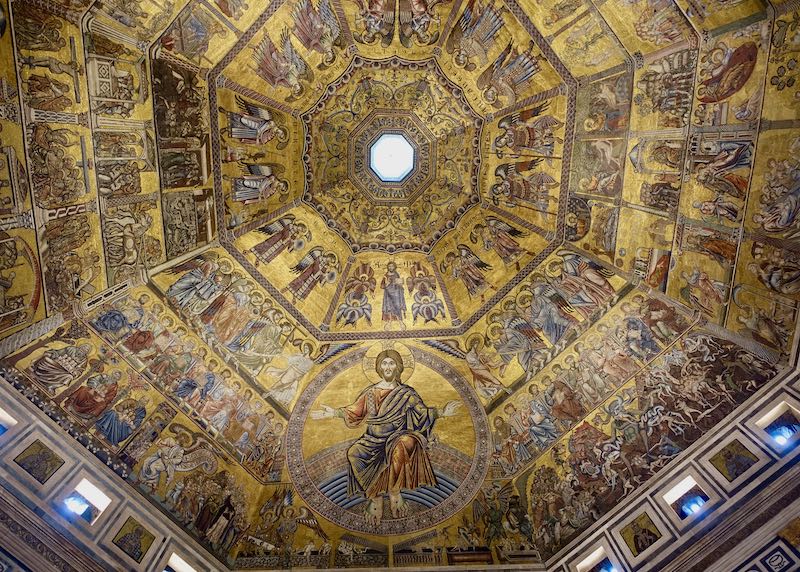
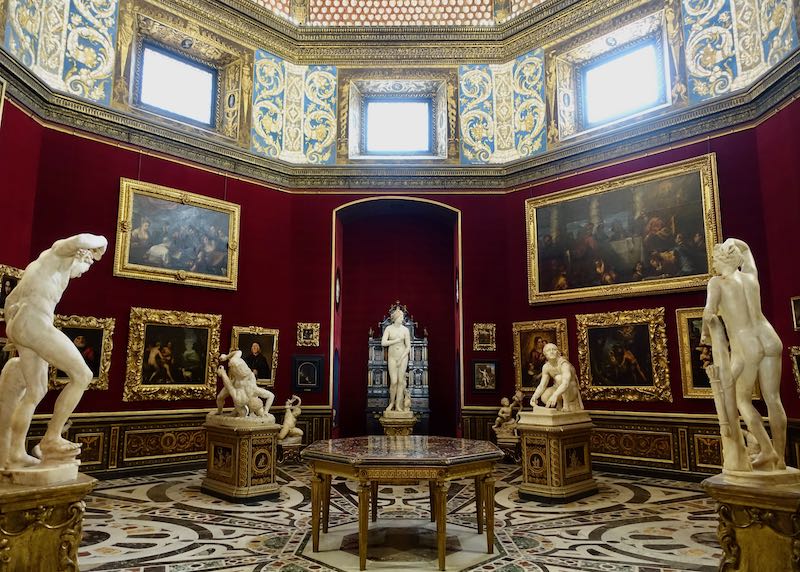
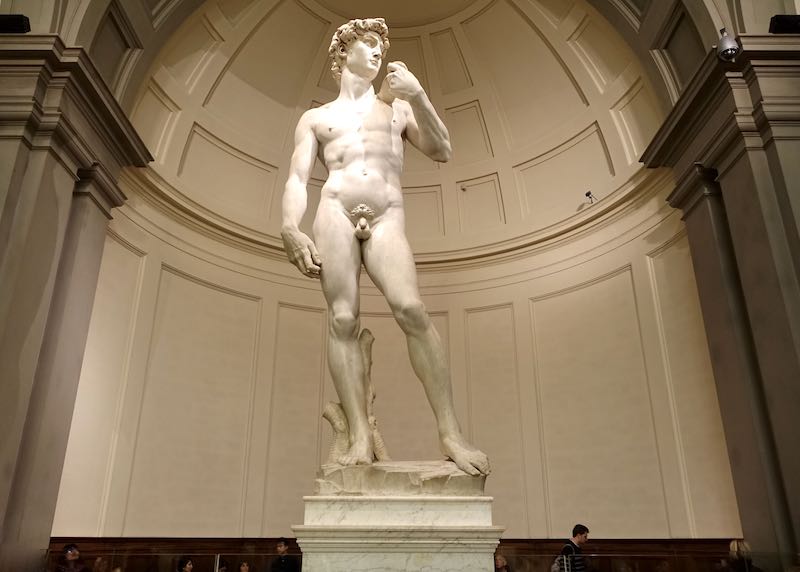
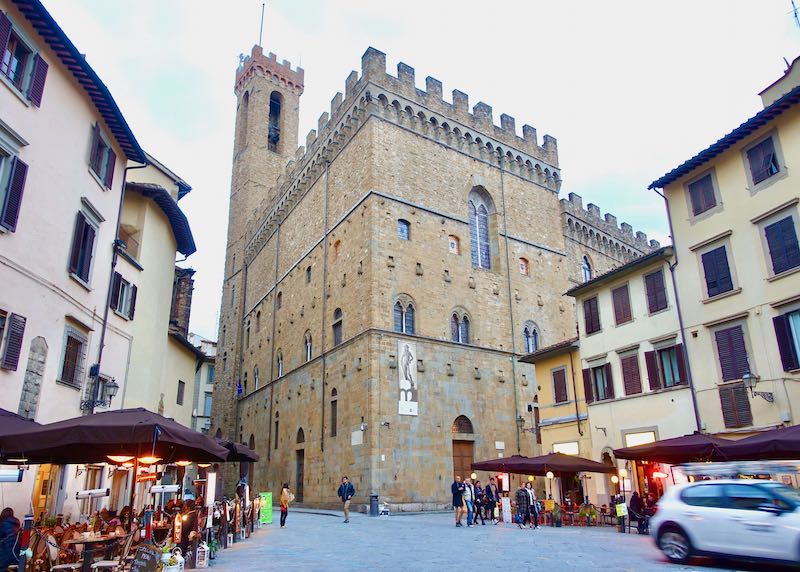
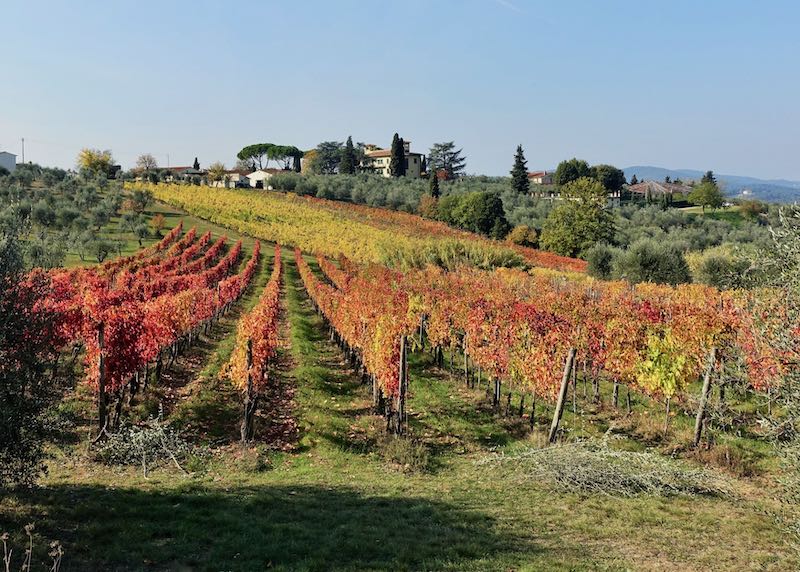
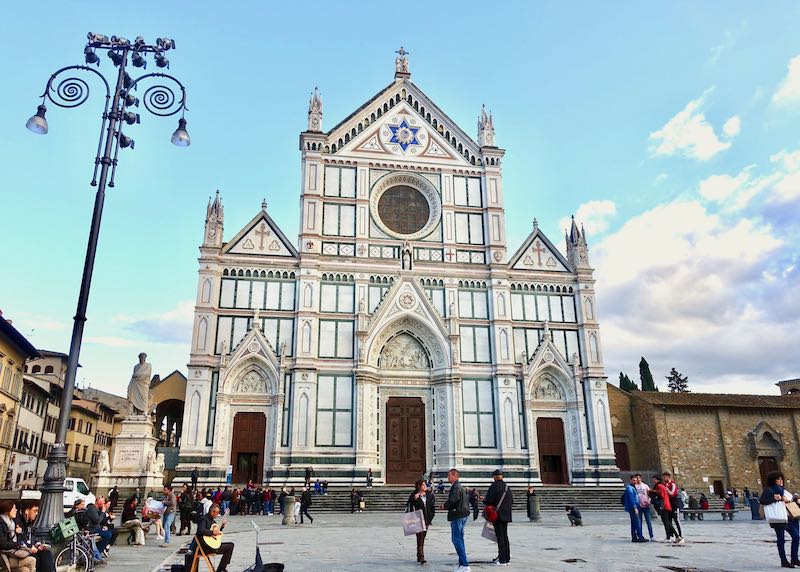
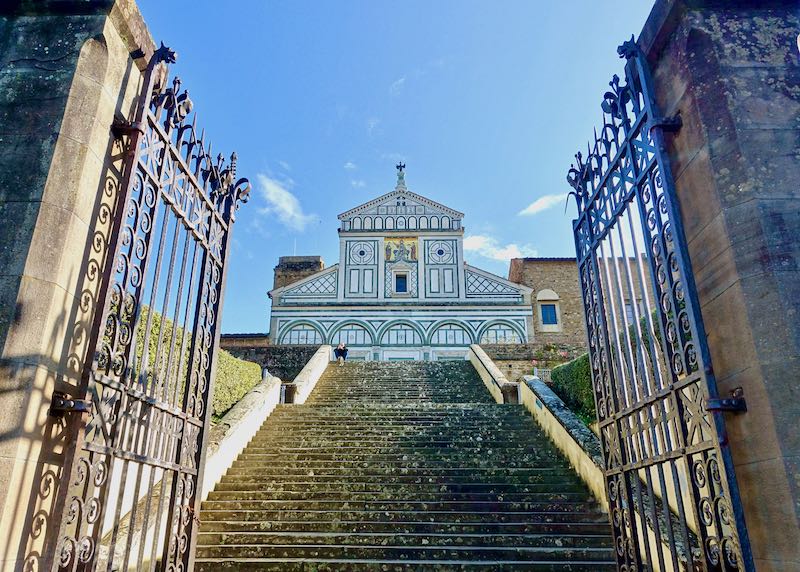
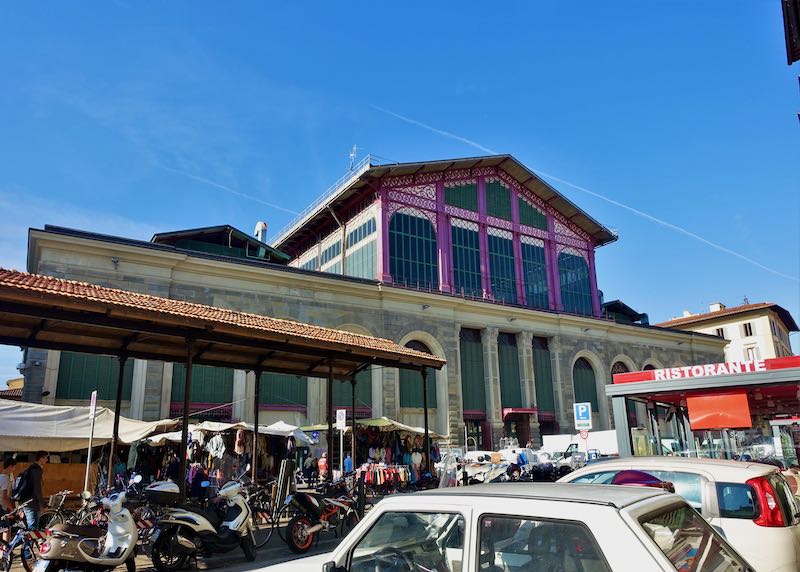
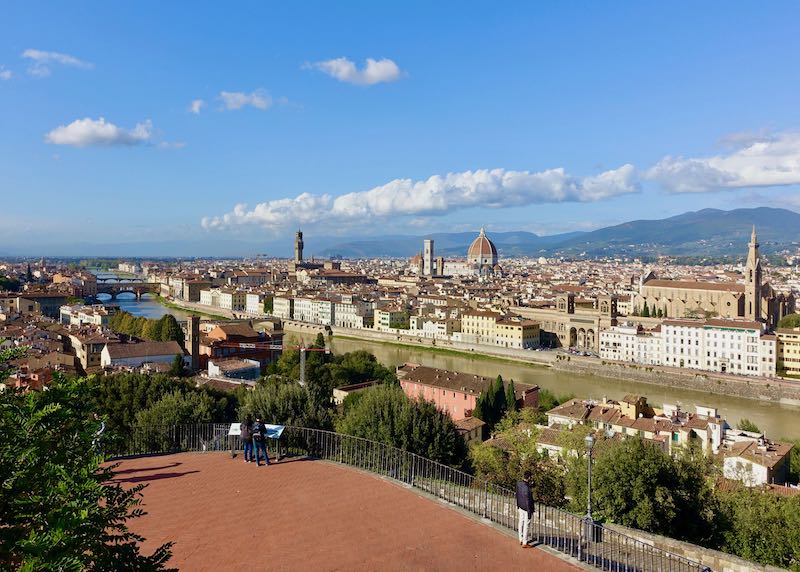
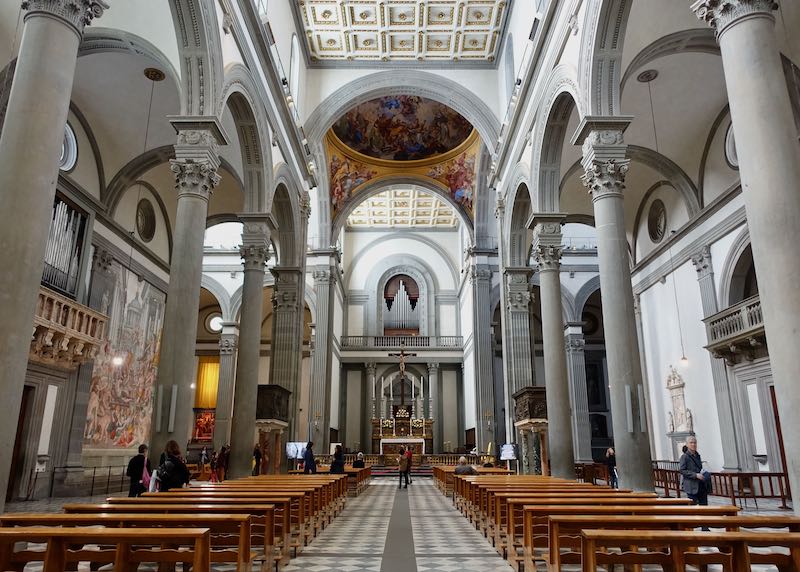
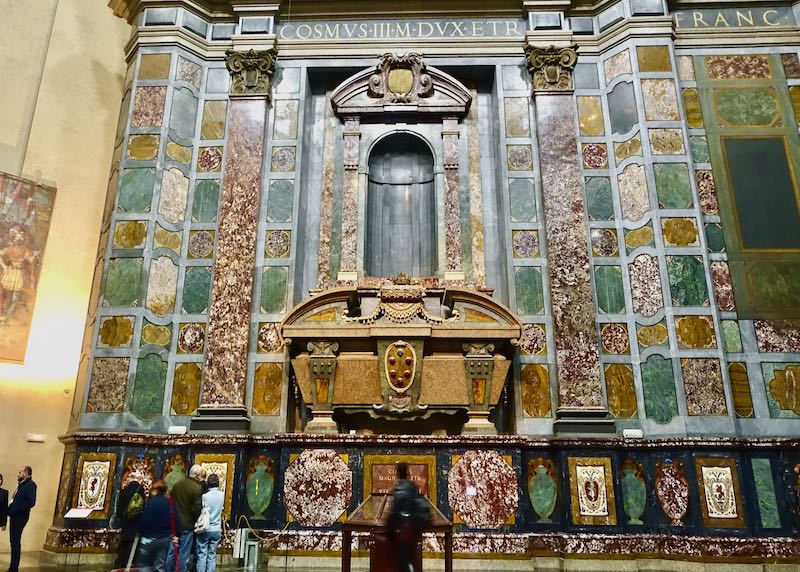
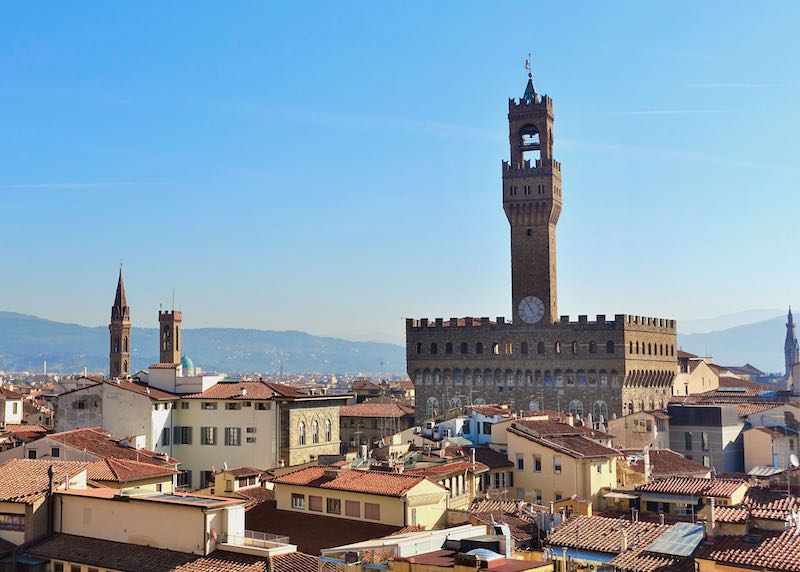
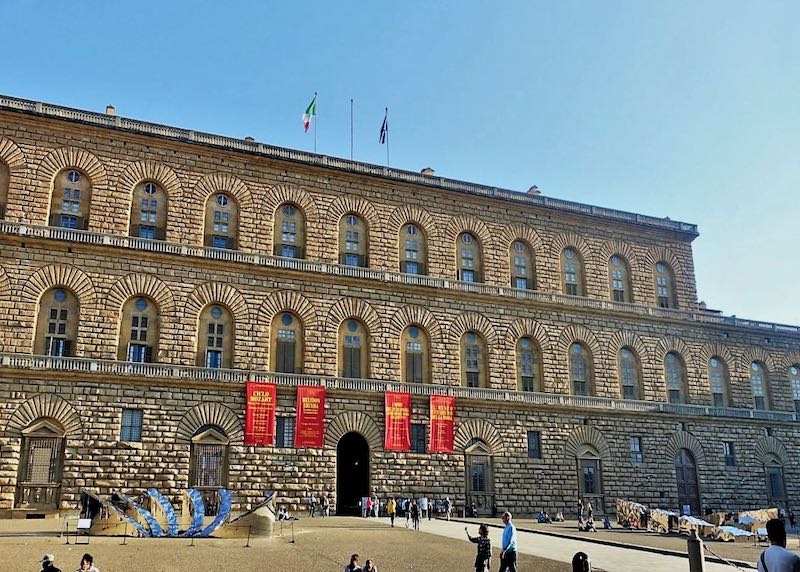
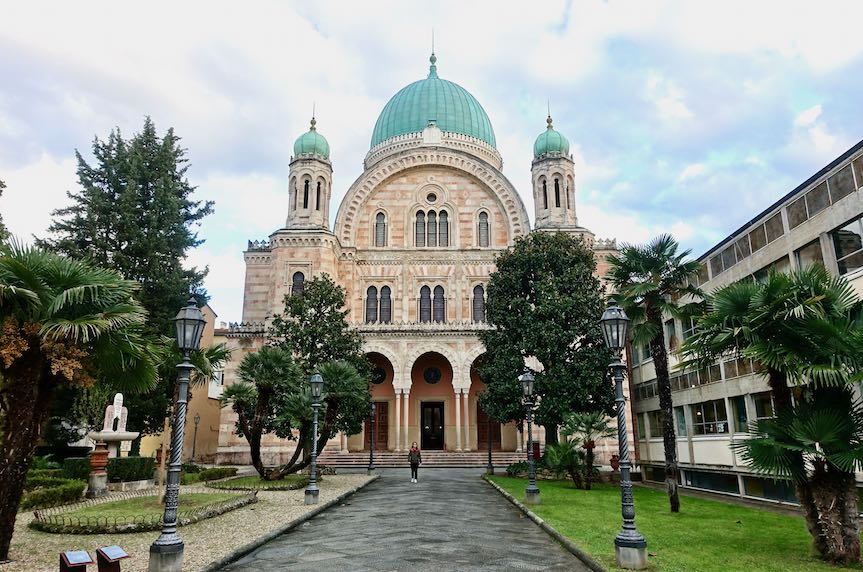
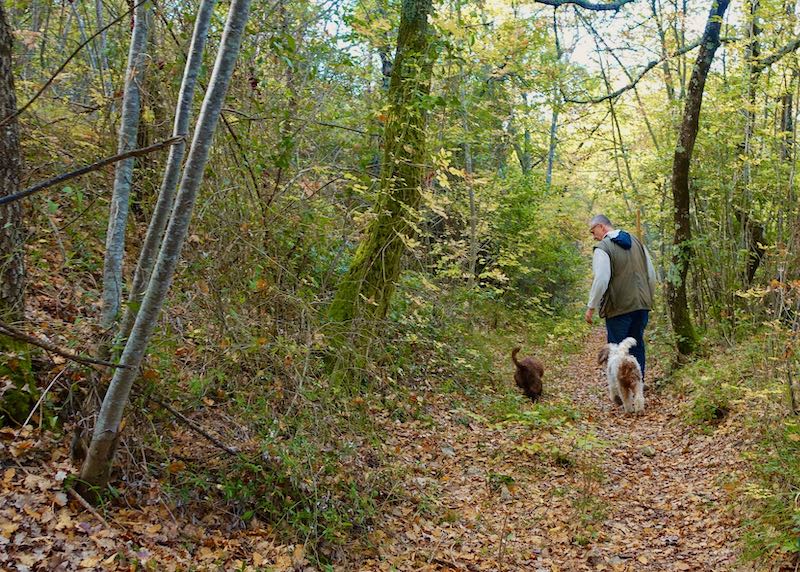
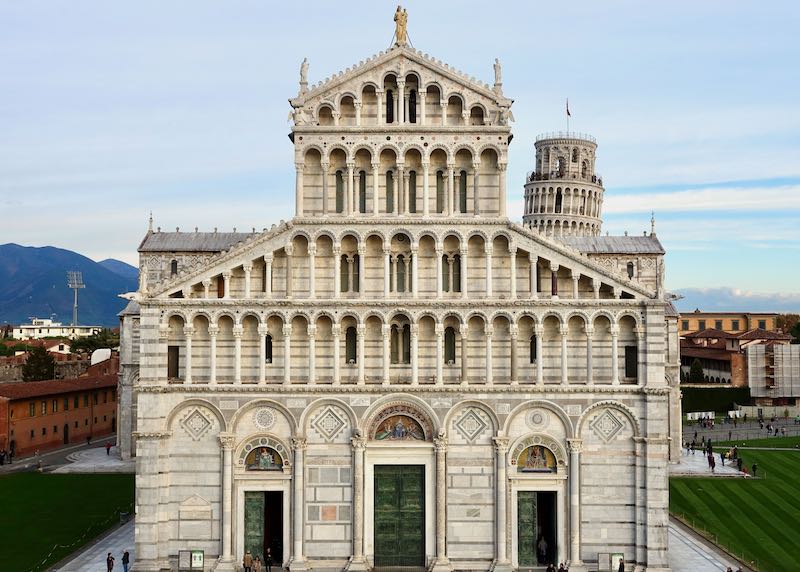
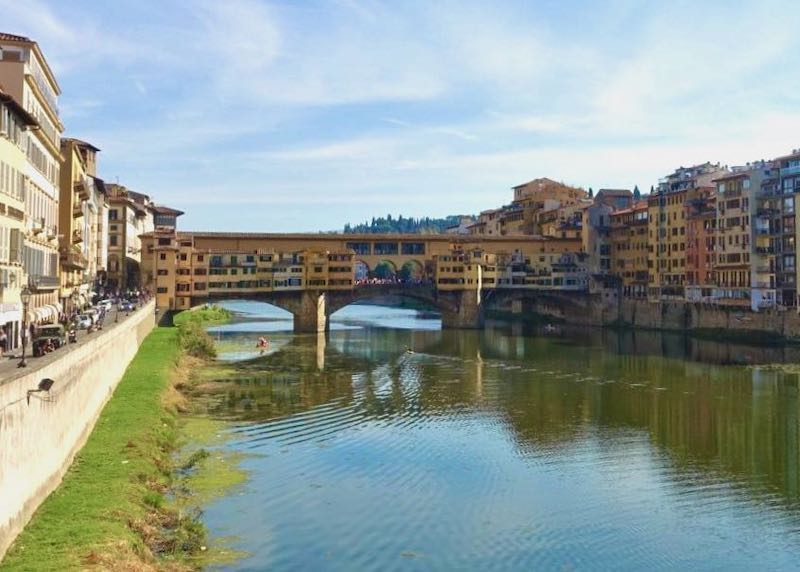
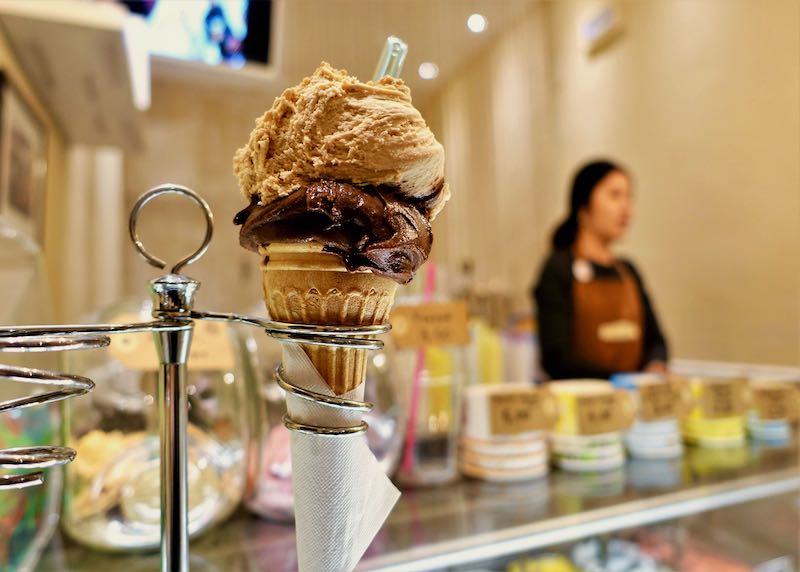
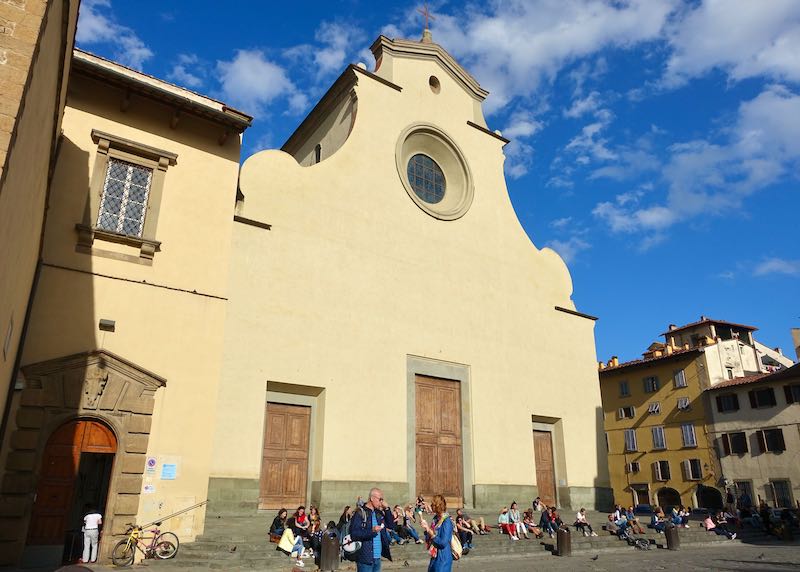
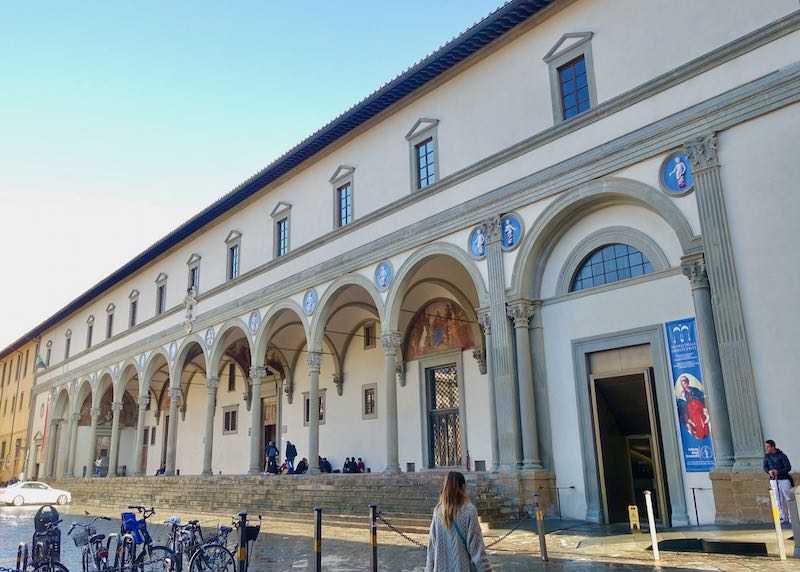
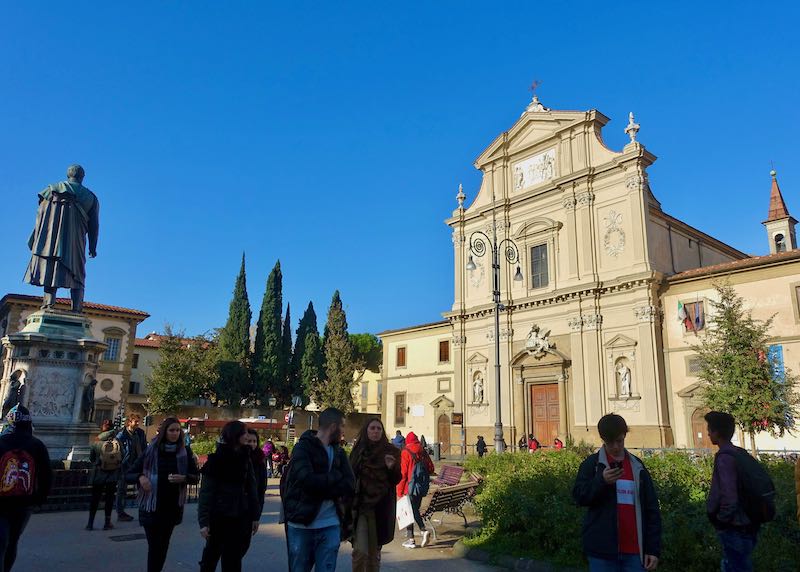
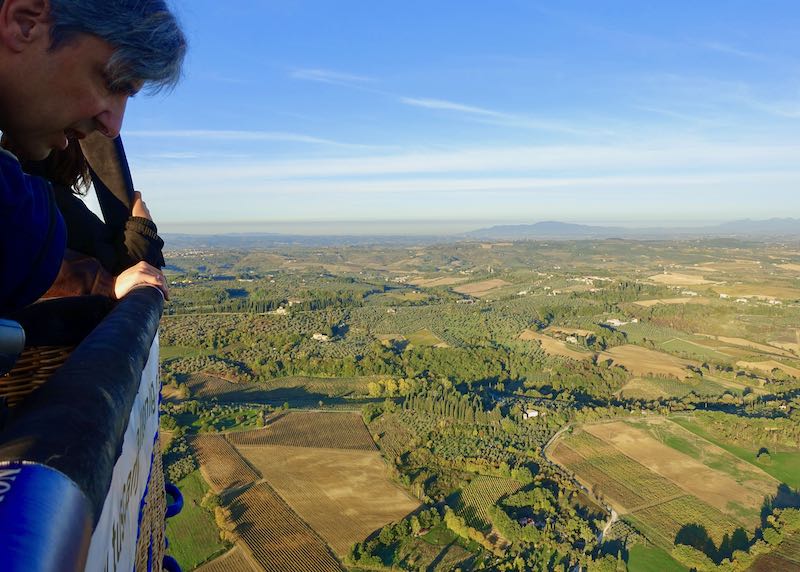
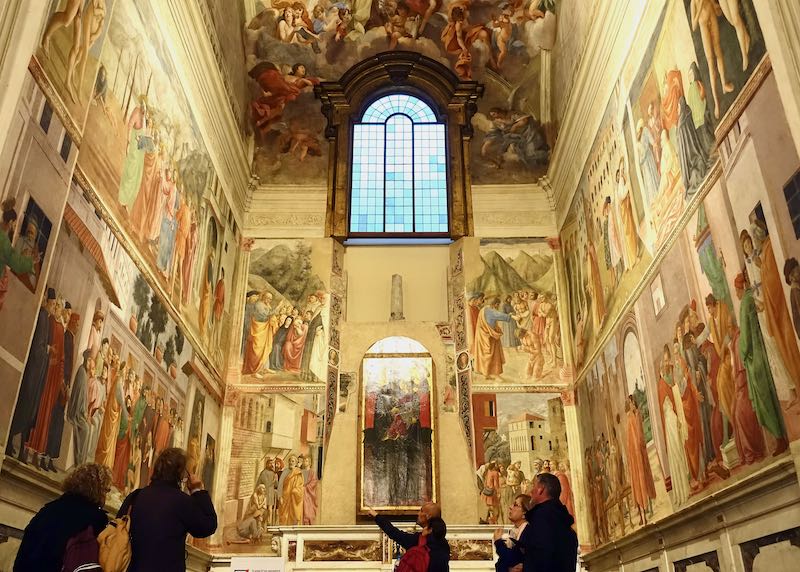
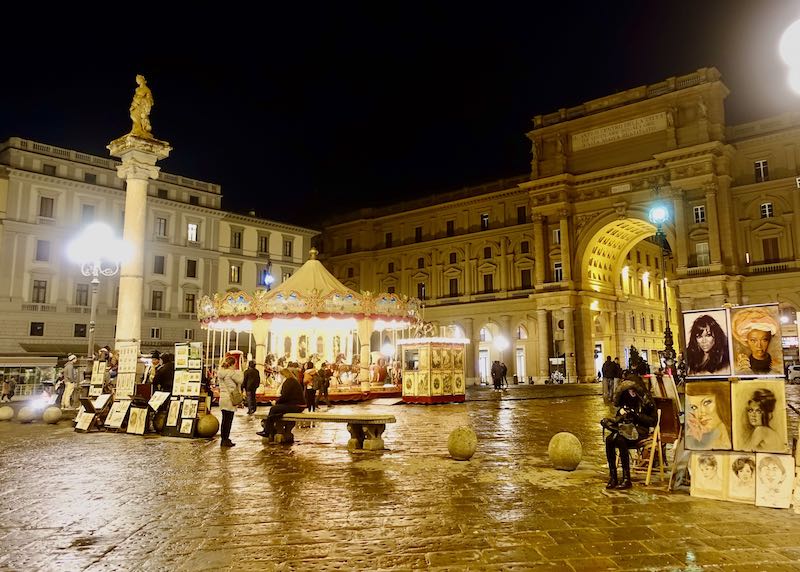
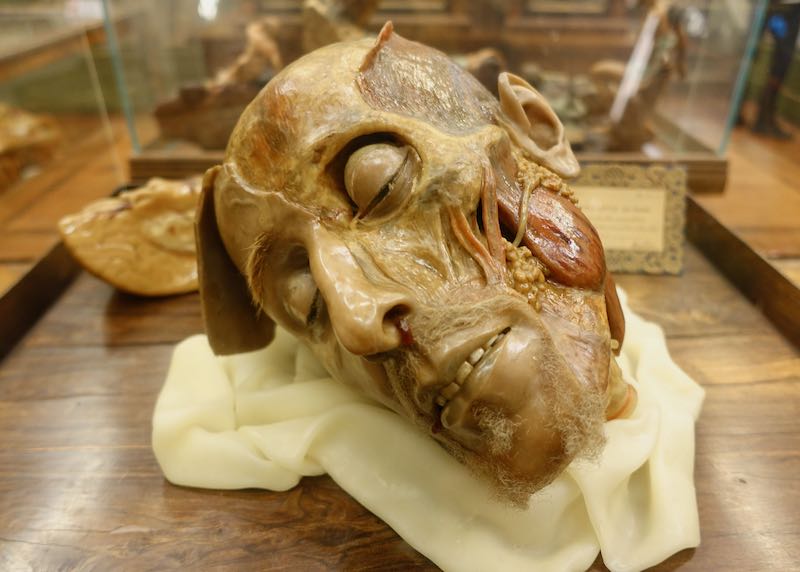
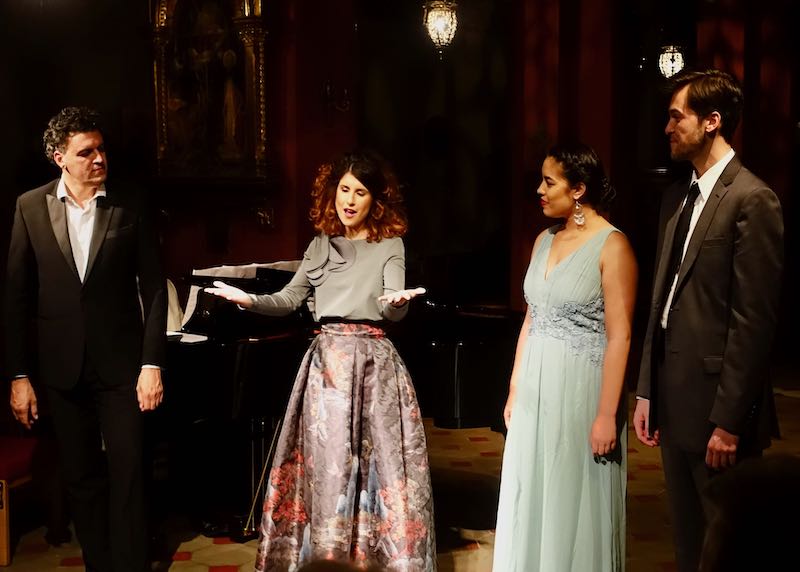
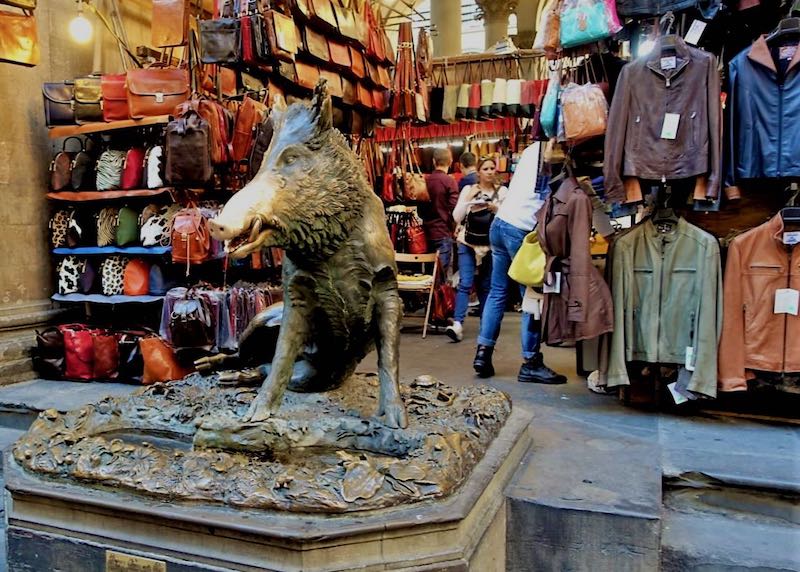
About Santorini Dave